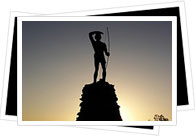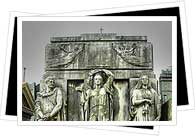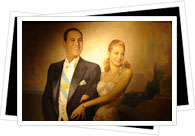
In the pre-colombian era Argentina was inhabited by various different native tribes who relatively little is known about. In Patagonia across Argentina and Chile the Tehuelches were found. In the Northwest (and also in the Atacama desert region of Chile) were the Diaguitas and to the east, Guaranís. These native South American Indian populations can still be found today and in certain areas have preserved their indigenous languages and customs.
Italian cartographer, Amerigo Vespucci was the first European to set foot in Argentina in 1502, however it was 14 years before Spaniard Juan Díaz de Solís made it there and another 20 years before the first Spanish settlement was created. By 1580 the Spanish had formed a small colony in the east where todays Buenos Aires is found and this was considered as part of Spain's most powerful viceroyalty in the Americas, the viceroyalty of Peru.
It wasn't until 1776 that the Viceroyalty of Río de la Plata was formed, which also encompassed parts of Paraguay, Bolivia and Uruguay. For a short stint of just over 30 years this development transformed Buenos Aires into a thriving port.

After three years of hard campaigning led by José de San Martín, Argentina was declared independent from Spain in 1816 at the Tucumán Congress. Several constitutions were developed but never served to change much and Argentina's first official president, Bernadino Rivadavia resigned promptly after his election in 1826. Despite being independent, until the end of the nineteenth century Argentina became more and more reliant on foreign investment, most notably that from Britain. This also lead to a huge influx of european immigration and has resulted in the fact that today 86% of Argentina's population is of european descent - a defining feature which sets it apart from other Latin American countries. Today the varied origins of Argentina's population has resulted in diverse traditions and culinary trends, the most unusual of which being the Welsh colony in southern Chubut (Patagonia).

Between 1862 and 1880 Argentina saw two different presidents come into office; Bartolomé Mitre and then Domingo Faustino Samiento, however, this period was punctuated by the War of the Triple Alliance (1864-1870) in which Argentina, Uruguay and Brazil left Paraguay in a state of devastation. This was followed by Julio Argentino Roca's first stint as president (1880-1886 and then 1898-1904) which also signalled the start of an affluent period for Argentina's economy as the exportation of beef and other goods began to pull in money. Argentina was under conservative government until 1916 when Hipólito Yrigoyen's radical party came into power. During this time the middle and upper classes saw the most changes and Argentina boasted the fourth most prosperous economy in the world.

This brief fortuitous period was abruptly finished with the Wall Street Crash in 1929 and during the 15 years that followed Argentina was governed conservatively. Much of its money came from the oil industry which was largely subsidised by North American companies. Argentina took a fairly neutral position in World War II.
Next came the infamous rule of Juan Perón, click on the link to read more...